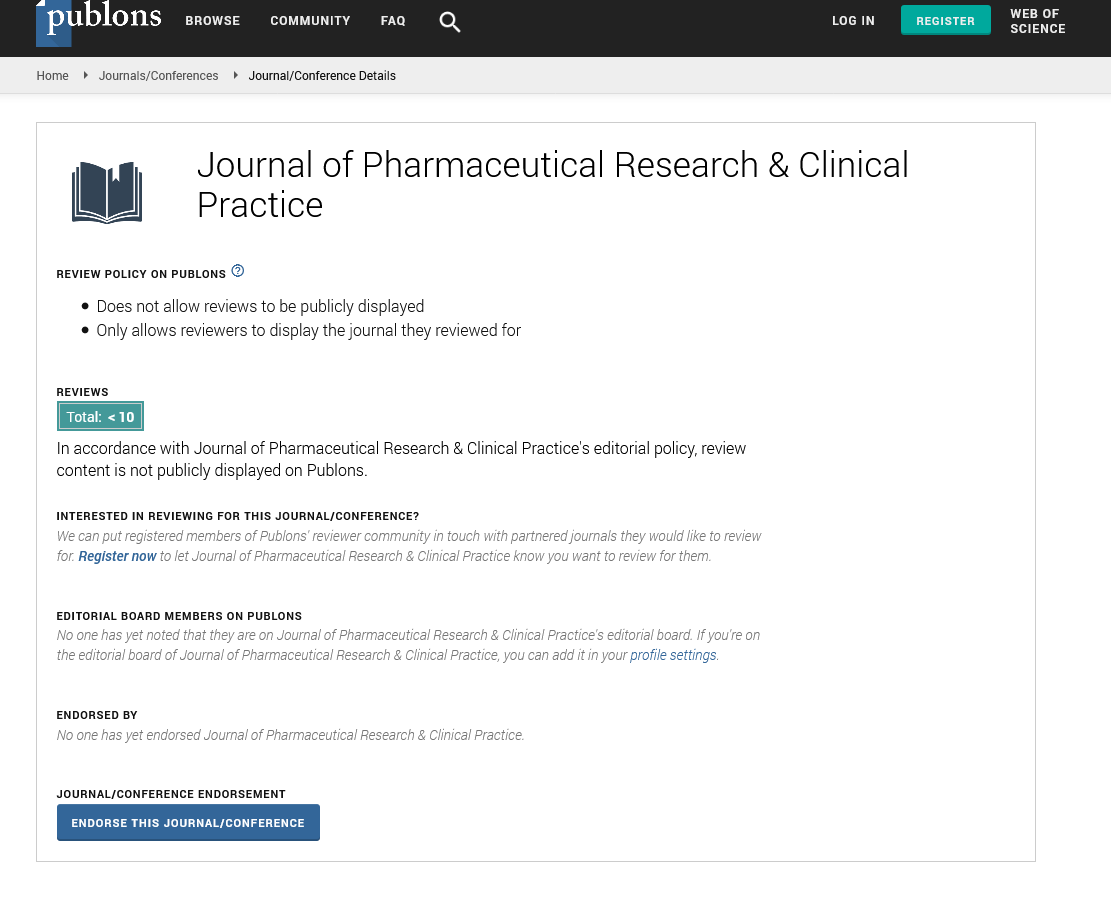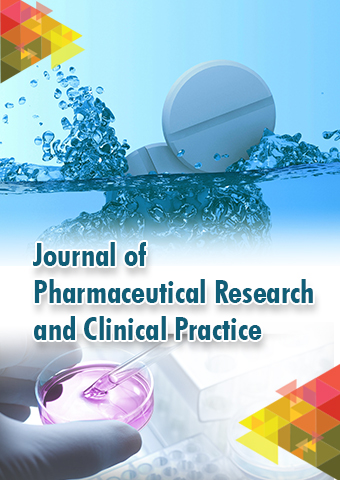Short Article - Journal of Pharmaceutical Research and Clinical Practice (2019) Volume 2, Issue 2
Role of microRNAs in regulating TGF-Îò and IL-10 expression in Human CD8+CD25+CD127 low Regulatory T cells
Redouane Rouas1, Mohammad Fayyad-Kazan 2, Makram Merimi1, Mehdi Najar3, Arsene Burny1, Walid Rachidi4, Bassam Badran2, Philippe Lewalle1 and Hussein Fayyad-Kazan1,2*
Laboratory of Experimental Hematology, Institut Jules Bordet, Université Libre de Bruxelles, 121, Boulevard de Waterloo, 1000, Bruxelles Belgium.
Laboratory of Cancer Biology and Molecular Immunology, Faculty of Sciences I, Lebanese University, Hadath, Lebanon.
Laboratory of Clinical Cell Therapy, Institut Jules Bordet, Université Libre de Bruxelles (ULB), Campus Erasme, Brussels, Belgium.
Abstract
Regulatory T cells (Tregs), a population of T cells, are essential for maintaining immune balance and their dysfunction could lead to critical immunological disorders. Tregs are classified as either thymus-derived natural Tregs (nTregs) or adaptive Tregs that are triggered in the periphery in the presence of certain cytokines such as IL-10, and transforming growth factor-β (TGF- β). Treg cells are recognized by expression of FOXP3, a forkhead/winged helix transcription factor 3, and high expression levels of CD25 (the α-chain of the IL-2 receptor). CD8+ T cells represent a major constituent of adaptive immunity. Although CD8+ Tregs with a suppressive function have been identified, the regulatory properties of these cells are still not fully characterized. CD8+CD25+ Treg cells can suppress CD4+CD25− T cells in a manner dependent on their membrane-bound TGFβ and CTLA-4. Moreover, they can secrete certain immunosuppressive cytokines such as TGF-β and IL-10. MicroRNAs (miRNAs), short noncoding single-stranded RNA molecules, that can regulate gene expression post-transcriptionally upon binding to their potential target sites in the 3’ untranslated region (3’UTRs) of specific target mRNA, where they can trigger mRNA degradation and/or repression of protein translation. Nowadays, miRNAs are known to be involved in nearly all biological processes including regulating many aspects of immune responses such as phenotype and function of immune cells. In this study, we aimed at characterizing the miRNA signature of human peripheral blood (PB) CD8+CD25+CD127low Tregs that has not been described yet. We next addressed the effect of miRNA signature on behavior of those cells.
Regulatory T cells (Tregs), a population of T cells, are essential for maintaining immune balance and their dysfunction could lead to critical immunological disorders. Tregs are classified as either thymus-derived natural Tregs (nTregs) or adaptive Tregs that are triggered in the periphery in the presence of certain cytokines such as IL-10, and transforming growth factor-β (TGF- β). Treg cells are recognized by expression of FOXP3, a forkhead/winged helix transcription factor 3, and high expression levels of CD25 (the α-chain of the IL-2 receptor). CD8+ T cells represent a major constituent of adaptive immunity. Although CD8+ Tregs with a suppressive function have been identified, the regulatory properties of these cells are still not fully characterized. CD8+CD25+ Treg cells can suppress CD4+CD25− T cells in a manner dependent on their membrane-bound TGFβ and CTLA-4. Moreover, they can secrete certain immunosuppressive cytokines such as TGF-β and IL-10. MicroRNAs (miRNAs), short noncoding single-stranded RNA molecules, that can regulate gene expression post-transcriptionally upon binding to their potential target sites in the 3’ untranslated region (3’UTRs) of specific target mRNA, where they can trigger mRNA degradation and/or repression of protein translation. Nowadays, miRNAs are known to be involved in nearly all biological processes including regulating many aspects of immune responses such as phenotype and function of immune cells. In this study, we aimed at characterizing the miRNA signature of human peripheral blood (PB) CD8+CD25+CD127low Tregs that has not been described yet. We next addressed the effect of miRNA signature on behavior of those cells.
Using the TLDA technique followed by individual qRT-PCR, we identified 14 miRs among which 12 miRNAs (miR-103, -106b, -27b-3p, -301, -30c, -324-3p, -330-3p, -331-5p, -340-5p, -362, -484, and miR-579) were downregulated whilst 2 miRNAs (miR-130a, miR-34a) were upregulated in CD8+ Tregs versus CD8+ conventional T cells. Using the computational microRNA Data Integration Portal (mirDIP), IL-10 was identified as potential target for miR-27b-3p and miR-340-5p whereas TGF-β appeared to be putatively targeted by miR-330-3p. Accordingly, we checked whether IL-10 and TGF-β expression could be directly regulated by these miRNAs. Our luciferase reporter gene analysis revealed that IL-10 is directly regulated by miR-27b-3p and miR-340-5p whereas TGF-β expression is directly regulated by miR-330-3p. These regulatory effects were further confirmed in vivo upon observing that overexpression of miR-27b-3p and miR-340-5p in primary human CD8+ Tregs led to diminished IL-10 production. Moreover, overexpression of miR-330-3p in Tregs led to a negative effect on TGF-β expression.
In conclusion, our results unraveled the miRNA signature of peripheral CD8+CD25+ Tregs and showed that miR-27b-3p and miR-330-3p could be involved in the post-transcriptional control of the expression of the suppressive immune cytokines IL-10 and TGF-β. In agreement with the observed role for miRNAs in regulating IL-10 expression, miR-27a is known to modulate the inflammatory responses of macrophages upon altering IL-10 expression. Moreover, miRNA-mediated regulation of TGF-β1 expression has already been described as miR-744 was shown to downregulate TGF-β1 expression upon targeting its 3’UTR. Although a complete understanding of the mechanisms regulating CD8+ Tregs function is still not fully established, our results highlight an important role for miRNAs in modulating CD8+ Treg-mediated immunosuppressive capacity and thus suggest miRNAs as a potential therapeutic tool/target towards treating different immune-based disorders.


